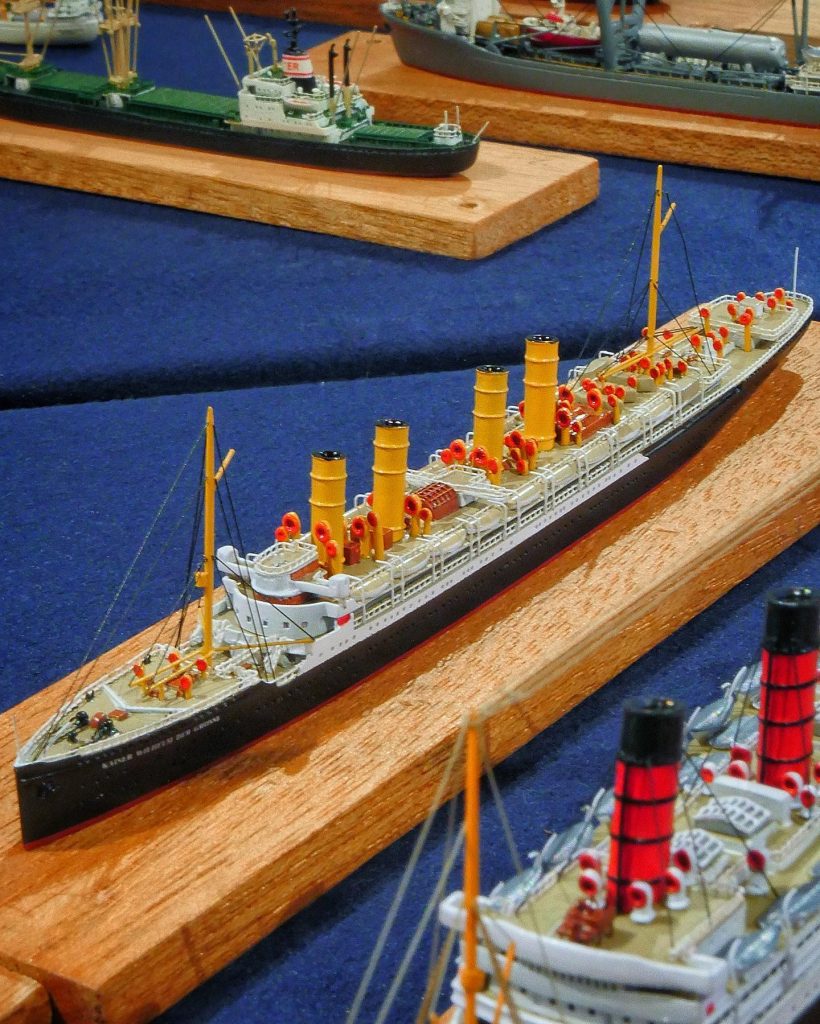
Ocean liner Kaiser Wilhelm der Grosse. This extremely detailed miniature in a scale of 1:1250 was built by the CSC workshop and is on display on deck 9.
As frist superliner in history, the ocean liner Kaiser Wilhelm der Grosse meant a revolution that would mark the way liners were built for the coming decades. Most notably, she was the first to flag four funnels.
She was built by the Stettiner Vulcan shipyard, in today’s Szczecin, Poland, between 1896 and 1897. The ship set new standards in luxury, safety and speed – and was also built to be transformed into an auxiliary cruiser in case of war. She is to be seen in the context of the German Empire aiming to become a concurring seapower under Emperor Wilhelm II – mostly with Great Britain. The Kaiser Wilhelm der Grsse manage to obtain the Blue Riband for the fastest North Atlantic crossing. That speed record had been mostly under British control since the eve of steamers. She lost the record in 1900 to the ocean liner Deutschland of the HAPAG.
The Norddeutsche Lloyd then planned and built three improved sister ships of their flagship. But the British reacted: Cunard built the RMS Lusitania and RMS Mauritania, and later White Star launched the RMS Olympic, setting even higher standards. This, and the new ships of the HAPAG, had the Norddeutsche Lloyd downgrade their once flagship. By 1914, the Kaiser Wilhelm der Große had become an all 3rd class ship dedicated to the profitable transport of emigrants to North America. But World War I cut this duty short. The ship was armed and went to act as a merchant raider off the West Coast of Africa. She captured and sunk merchant ships, taking their crews and passengers aboard. Those being the days before World War I turned into a total war, ships with mostly women and children aboard were allowed to continue their voyage. On August the 26th 1914, while her bunkers were being refilled with coal off of Villa Cisneros (in what was Spanish Sahara) she was spotted by the British cruiser HMS Highfliyer. After letting her prisoners go to land, the Kaiser Wilhelm der Große engaged battle. The crew claimed to have scuttled her after running out of ammunition. Most of them survived the skirmish, but the ship capsized and was lost.
This extremely detailed miniature in a scale of 1:1250 was built by the CSC workshop and is on display on deck 9.
